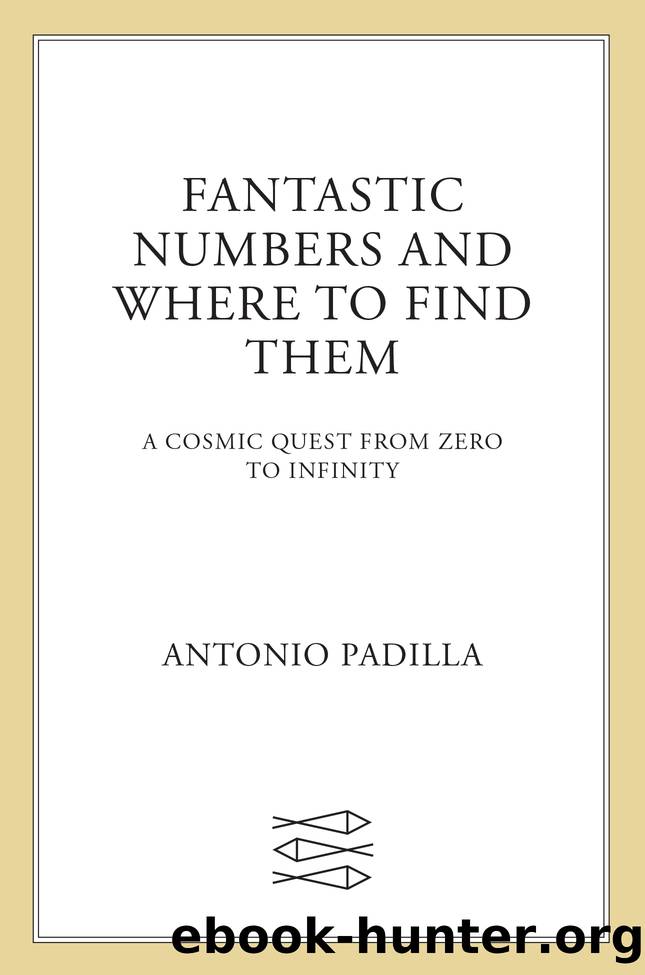Fantastic Numbers and Where to Find Them by Antonio Padilla

Author:Antonio Padilla
Language: eng
Format: epub
Publisher: Farrar, Straus and Giroux
The most celebrated member of the Asharite school was Abu Hamid al-Ghazali, considered by many to be a Mujjaddid, a figure who appears once a century to renew the faith of the Islamic people. In his teaching, al-Ghazali condemned Aristotelian thought and similar ideas that contradicted Godâs omnipotence, declaring that anyone who followed them should be put to death. His influence was such that it sparked the beginning of the end for natural philosophy in medieval Islam, in favour of a religious hard line. And yet, by embracing the atomists and the interstitial void, he allowed sËifr to prosper. Zero, it seemed, was approved by Allah.
In just seven years at the beginning of the eighth century, the Umayyad caliphate spread relentlessly through the Iberian Peninsula. They founded Al-Andalus and opened up a channel for Islamic knowledge to pass into Western Europe. That said, it was never an easy frontier. The Christian and the Islamic world were often at war â from Charlemagneâs raids into northern Spain in 778 to the Eastern Crusades of the eleventh, twelfth and thirteenth centuries. For much of this time, the Christians were still using Roman numerals and had little interest in the heresy of zero. They were committed to Aristotle, his rejection of the void and his proof of Godâs existence. Zero challenged that. It challenged their faith.
The tide began to turn towards the end of the twelfth century, when Guglielmo Bonaccio, a customs official from Pisa, was sent to the Mediterranean town of Bugia in Algeria. He decided to take along his son, Leonardo. The Arab world was an intellectual melting pot and, if nothing else, his son could learn to use the abacus there. But Leonardo learned so much more. He fell in love with Arabic mathematics and Indian numerals, and it was a love affair that would make him eternally famous. You probably know him by another name.
Fibonacci.
He became known as this by accident. Leonardo signed his work âfilius Bonacciâ, meaning âson of Bonaccioâ, which scholars would later mistake for a surname, Fibonacci. But he was never known as Fibonacci in his lifetime. He was known as Bigollo, which probably meant traveller. It was a suitable nickname because Fibonacci roamed widely â through Sicily, Greece, Syria and Egypt â gathering knowledge from everywhere he went. At the turn of the thirteenth century, when he was around thirty years old, he decided to settle down, returning to Pisa to work on a masterpiece. Two years later, in 1202, it was published: Liber Abaci. It was a treatise on the mathematics he had learned in the Arab world: on algebra and arithmetic, on the mathematics of trade, and on the marvellous Indian numerals he held in such great esteem. At the beginning of his first chapter, he wrote:
These are the nine figures of the Indians
9, 8, 7,6, 5, 4, 3, 2, 1
With these nine figures and with this sign 0, which in Arabic is called sËifr, any number can be written.
Download
This site does not store any files on its server. We only index and link to content provided by other sites. Please contact the content providers to delete copyright contents if any and email us, we'll remove relevant links or contents immediately.
The Complete Stick Figure Physics Tutorials by Allen Sarah(7338)
Secrets of Antigravity Propulsion: Tesla, UFOs, and Classified Aerospace Technology by Ph.D. Paul A. Laviolette(5333)
Thing Explainer by Randall Munroe(3910)
The River of Consciousness by Oliver Sacks(3572)
The Order of Time by Carlo Rovelli(3162)
How To by Randall Munroe(3074)
A Brief History of Time by Stephen Hawking(2992)
I Live in the Future & Here's How It Works by Nick Bilton(2960)
What If?: Serious Scientific Answers to Absurd Hypothetical Questions by Randall Munroe(2669)
The Great Unknown by Marcus du Sautoy(2662)
Midnight in Chernobyl by Adam Higginbotham(2516)
Blockchain: Ultimate Step By Step Guide To Understanding Blockchain Technology, Bitcoin Creation, and the future of Money (Novice to Expert) by Keizer Söze(2467)
Networks: An Introduction by Newman Mark(2382)
The Meaning of it All by Richard Feynman(2319)
Easy Electronics by Charles Platt(2308)
The Tao of Physics by Fritjof Capra(2247)
Midnight in Chernobyl: The Untold Story of the World's Greatest Nuclear Disaster by Adam Higginbotham(2196)
When by Daniel H Pink(2098)
Introducing Relativity by Bruce Bassett(2097)
